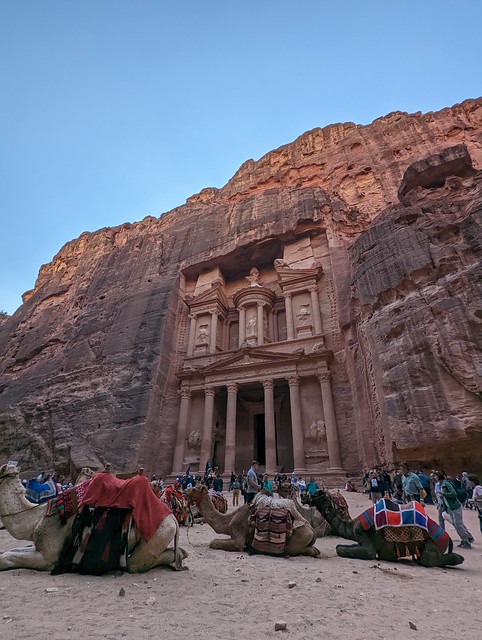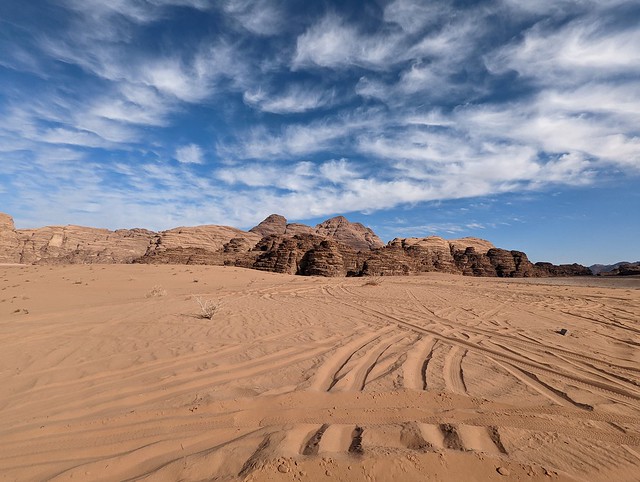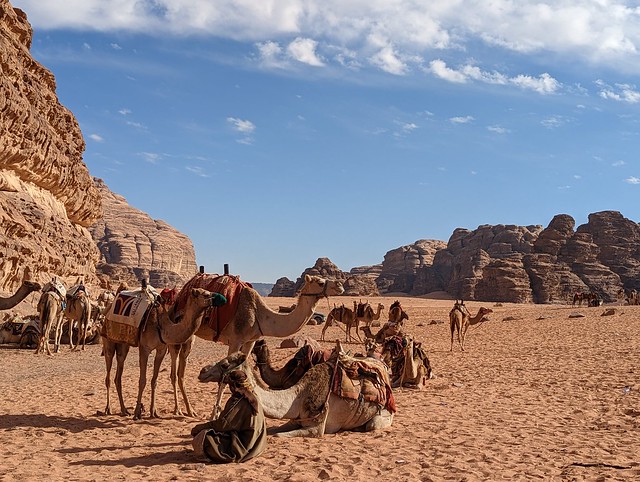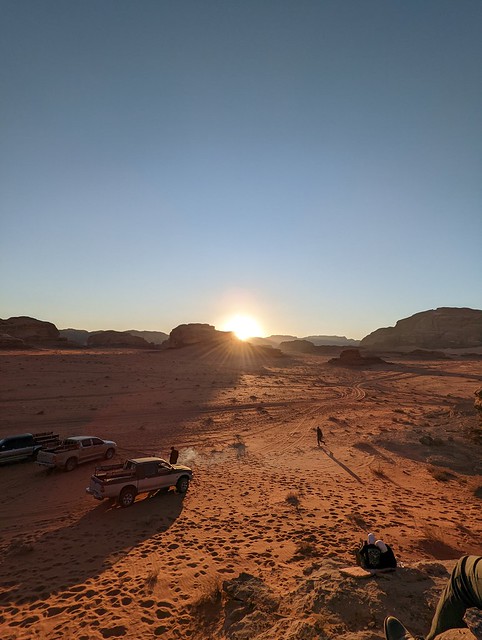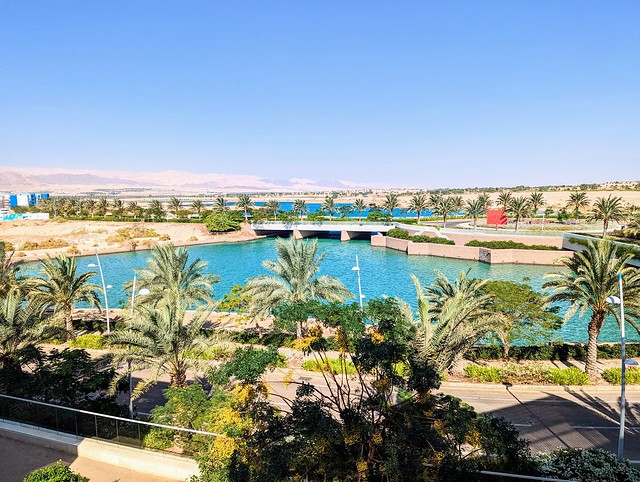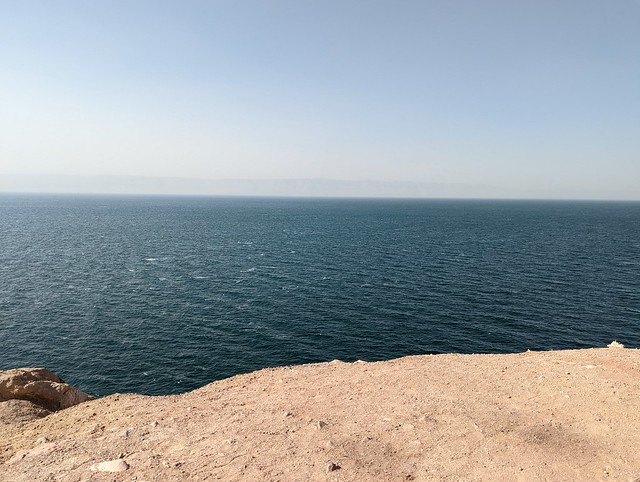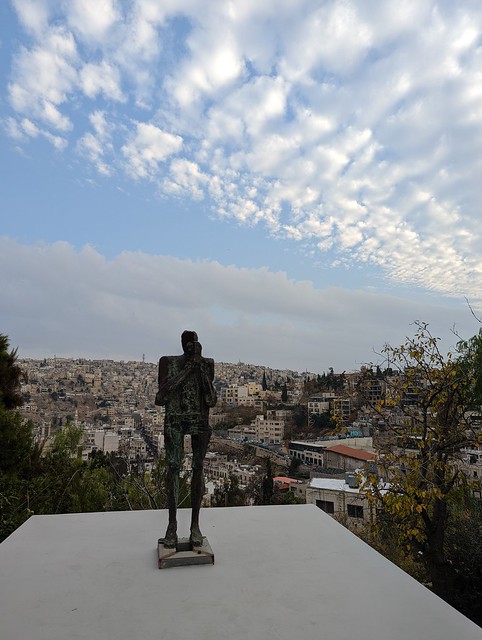Completely unrelated to the fact that I had already seen Dune in the cinema three times within the first year it came out, my childhood-era plans to visit the middle-east were bolstered when a friend from high school that I hadn’t seen in over a decade showed me his travel pictures in Jordan. Needless to say, within a few weeks, we had planned an itinerary and booked our flights to Amman, Jordan.
Itinerary
Given that it was our first time to Jordan, we devised a fairly common itinerary that would allow us to see all the major destinations: the capital of Amman, the historic city of Petra (which was listed as one of the New 7 Wonders of the World), the desert valley of Wadi Rum, the Red Sea at the coastal city of Aqaba, and the Dead Sea. The Dead Sea aside, most of these are well-connected by JETT-operated public transport; nevertheless, irregular bus schedules meant that we ended up using a local, Uber-style transport method most of the time (an app called Careem).2
Petra (ٱلْبَتْراء)
We arrived in Amman airport rather late at night, and I had to wrap up work on a paper I was working on, so the first day was rather uneventful;3 if anything, I ended up doing a full-nigher and was absolutely deceased on my way to Petra, our first destination. The capital city of an ancient Arab civilization called the Nabateans, Petra is an ancient city in Jordan known today for its rock-cut architecture and the iconic Treasury (Al-Khazneh, الخزنة;) building.
We stayed at a cozy hotel about ten minutes away by shuttle bus to the main entrance point of Petra.4 From there, the city is accessed through a narrow canyon called the Siq, which lead straight to the Treasury. Although stunning, it was the trail beyond, leading to the theater and monarchy, that truly drew me in with its magnificent views of the mountainous landscape.
Furthermore, given that Petra is an extremely popular destination, we had to be prepared to ward off a variety of scam artists and hawkers; particularly at the entrance of the site and near the Treasury. This was fortunately limited to only those spots and, on a hike further in the ancient city, we were offered coffee and refreshments for next to nothing by a Bedouin mother and her daughter residing in a small settlement. It was a lovely, genuine interaction that was unfortunately interrupted by a Canadian / Lebanese couple that made continuous condescending, extremely classicist remarks about the two in both Arabic and English.
After a nice dinner at our hotel, we returned to Petra for the Petra at Night showing. While often described as a tourist trap (and indeed at times tacky), the setting at night, with its candle-lit roads and music performance at the Treasury did make for an unforgettable experience. If anything, the lack of an upper ticket limit on these showings somewhat weakens the entire experience due to the noise of the large crowds overwhelming any well-intended activities by the hosts.
Wadi Rum (وادي رم)
Also known as the Valley of the Moon, Wadi Rum is a desert valley located in southern Jordan, renowned for its stunning desert landscapes and towering sandstone mountains. Incidentally it is where filming took place for Dune Part II several weeks prior to our arrival.
Wadi Rum has a rich Bedouin heritage, and many Bedouin communities reside in the area, thriving on tourism. Deciding to stay the night at one of these camps, we took local transport to a gas station nearby Wadi Rum, where we were picked by jeep by our hosts.
As part of our stay, we had a four hour jeep ride through the dessert, visiting several noteworthy areas: an absolutely exhausting sand-dune climb, a visit to cave walls with petroglyphs depicting camels, a stop at the Jabal Burdah rock bridge, and a stop at a hill we could hike to observe the sunset.
Our group had a variety of mostly older, western visitors, and while our hosts looked to have fun, there were a few moments that felt awkward, such as seeing some of the younger Bedouin perform several songs and dances to the observing audience. There was a moment of joy when one of them, later on, almost mockingly subverted these power dynamics rooted in orientalism, and standing from higher ground, requested one of the guests to dance to Sweet Caroline, playing from the jeep’s radio.
Later that night, our Bedouin hosts prepared a traditional chicken-based dish they had put in a clay pot and buried under the sand earlier that day, followed by a conversation at a bonfire. This was slightly derailed by several younger guests that brought a bottle of vodka and made lewd remarks, intentionally putting our hosts in an embarrassing spot.
Stargazing in Wadi Rum, under a clear, starry night, was an absolute highlight in my life, though, fr fr.
Aqaba (الْعَقَبَة)
Aqaba, Jordan’s only seaport, is a coastal city located in the southernmost part of the country, situated along the northeastern tip of the Red Sea. As is common for major port cities, it served (and continues to do so) as an important trade hub throughout history – made more evident by the numerous affluent tourists and businessmen we saw during our short stay here.
We were lucky to strike a great deal for our hotel, which usually went for triple the price and was located in what was practically a closed community, Marina Village. Although quite the bourgeois splurge, we had an incredible view from our hotel, with an even more astonishing breakfast service (who would have thunk that they could outdo the French in making croissants).
Although we had planned to go on a dive in the Red Sea, both of us unfortunately caught a small cold earlier on the trip and, given the many horror stories of diving with a cold, we switched to snorkeling instead. This was a mistake and in hindsight I might have preferred the damage to my ears. Although our coach was definitely trying to excite us whenever he came across interesting views, I was too occupied trying not to drown every time a wave splashed a bucket of water in my snorkel. The boat ride itself, however, was very pleasant. We had BBQ on board, and ended up chatting a while with a fellow PhD student and his wife, both from the United States.
Back in the city, we stocked up on a variety of spices and tea, and got a recommendation by the owner for a fantastic fish restaurant. Our waiter was incredibly jovial, adding extra food and drinks to our order because the Belgian soccer team had just lost a friendly match with Egypt (“so I should eat my sadness away”). The table in front of us, a group of 12 people, demanded separate bills with shared dishes split between whoever ate from it–annoying our waiter to the point that he showed us him drawing a donkey on the back of their receipts before handing it to them (we received a hand drawn rose on ours, which was adorable).
Dead Sea (اَلْبَحْرُ الْمَيْتُ)
The Dead Sea is a saltwater lake bordered by Jordan to the east and Palestine to the west, as well as the lowest point on Earth, situated more than 400 meters below sea level. The lake is one of the saltiest bodies of water in the world, known for its high salt concentration and buoyancy that allows people to float on its surface.
Bathing in the Dead Sea is definitely a unique, once-in-a-lifetime experience; yet also quite otherworldly and slightly uncomfortable–the water, while famous for its therapeutic properties due to the mineral-rich mud and minerals found in it, also tends to bite into the skin and we were recommended not stay longer than 10 - 15 minutes in it (followed by a shower, covering ourselves in dead sea mud, and another shower).5
Amman (عَمَّان)
Amman is the capital and largest city of Jordan, situated in the northwest part of the country.
Several people recommended us a particular restaurant, Da7berha (مطعم دحبرها),7 to try what is considered Jordan’s national dish: Mansaf, a dish made of lamb cooked in fermented dried yogurt and served with rice, eaten with your hands. Although the place can allegedly be a bit unfriendly or overcharge when catering to a foreign audience that doesn’t know how to order or act as a local,6 we had a good experience here. We followed up with another national dish, Kunafa, at Habibah Sweets (الحلو حبيبة).
Another interesting experience was at more upscale, western-oriented area with stores selling products such as vinyl record players for what basically amounted to a full monthly wage. Drinks at one coffeeshop, books@cafe, were 4JD each (easily 4x the price of having coffee elsewhere), and attracted an audience of affluent Jordanians that preferred to speak in English rather than in Arabic.8
The art-centered community building Darat al Funun and its artistic surrounding area was quite a highlight as well. We had great Sahlab, a Middle Eastern sweet milk pudding to which I’ve now become addicted to, and had a conversation with a local musician who was practicing his guitar here and had studied music in Spain in his youth. The place also hosted an academic talk by a Jordanian architectural anthropologist speaking on the transformation of refugee camps into ‘homes’, with a focus on its architectural development.
Finally, in the same neighborhood, we passed by a social space for international interaction that appeared to have strong roots in left-leaning scholarship and activism, and had a dedication to Salameh Kaileh, a prominent Palestinian-Syrian intellectual and activist that settled in Jordan.
“The problem lies not in the sparkle that but momentarily dazzles the eye. Rather, it lies in understanding the fundamental nature of that sparkle.”9 - Salameh Kaileh
Music
While traveling, I make a habit out of listening to local radio stations or asking recommendations to people I meet in hostels or bars, as my own form of personal souvenir. One particular band I have really come to appreciate is El Morabba3, an alternative rock band with post-rock influences that was particularly influential during the Arab Spring and has since shifted towards a more experimental electronic sound. (I’ve also been lucky to see them live during my time in Berlin.)
Conclusion
My trip to Jordan was my first big trip since before the pandemic, and something I had been wanting to do since I was a child. Although we had to be more wary in the massively touristic Petra, we had a pleasant and incredibly fortunate stay throughout (further mitigated by the fact that my partner speaks Arabic) and I genuinely would be happy to come back to Aqaba in the future.
Gallery Jordan
-
Jordan by Stevie Poppe (https://flic.kr/p/2fMA1vY - CC BY-SA 2.0) ↩
-
Good tip also to save on taxi negotiations. The app itself has English support, but drivers might not speak English so it’s best to be prepared and have a written address in Arabic ready. (Alternative tip, go with someone that speaks the language 🙃) ↩
-
On a fun side note, our hotel had two flags raised upon arrival: a Belgian flag and Japanese flag. Weird coincidence? ↩
-
The entrance to the historical site of Petra can be rather steep to tourists (locals and tourists from the middle east pay next to nothing), so buying a Jordan Pass, which includes a tourist visa and a variety of popular attractions including Petra, will probably be the best deal for most. ↩
-
Despite being right at the actual Dead Sea, this isn’t the best place to buy Dead Sea products like salt scrubs or mud masks; most of the nearby places are rather tourist-oriented and heavily upmarked. Get stuff from local stores in Aqaba or Amman. ↩
-
Reminding me a bit of my experience at some of the more local ramen places in Japan. In this case, we entered as if we had been there before, and just replied that it was the two of us when he asked us in Arabic how many of us should be seated. That was it. ↩
-
The name apparently means “the act of rolling rice in your hands”. ↩
-
A topic also touched upon by the excellent Egyptian graphic novel Shubeik Lubeik, for which I’ll write a review at some point. ↩
-
An argument for a return to dialectic materialism in the Arabic leftist intellectual scene. ↩

